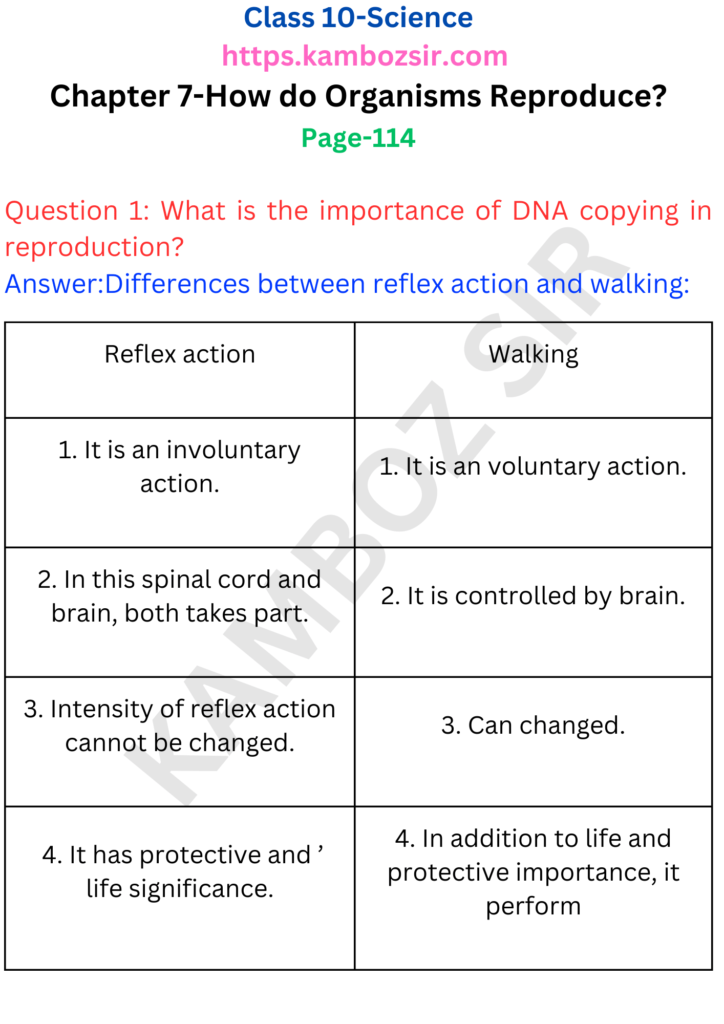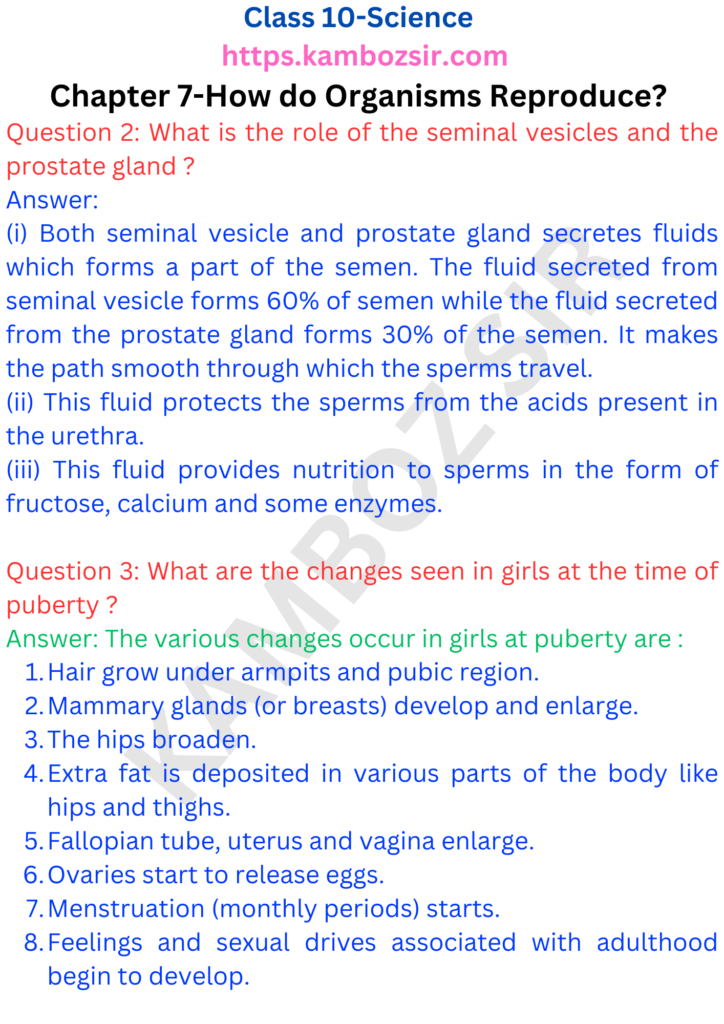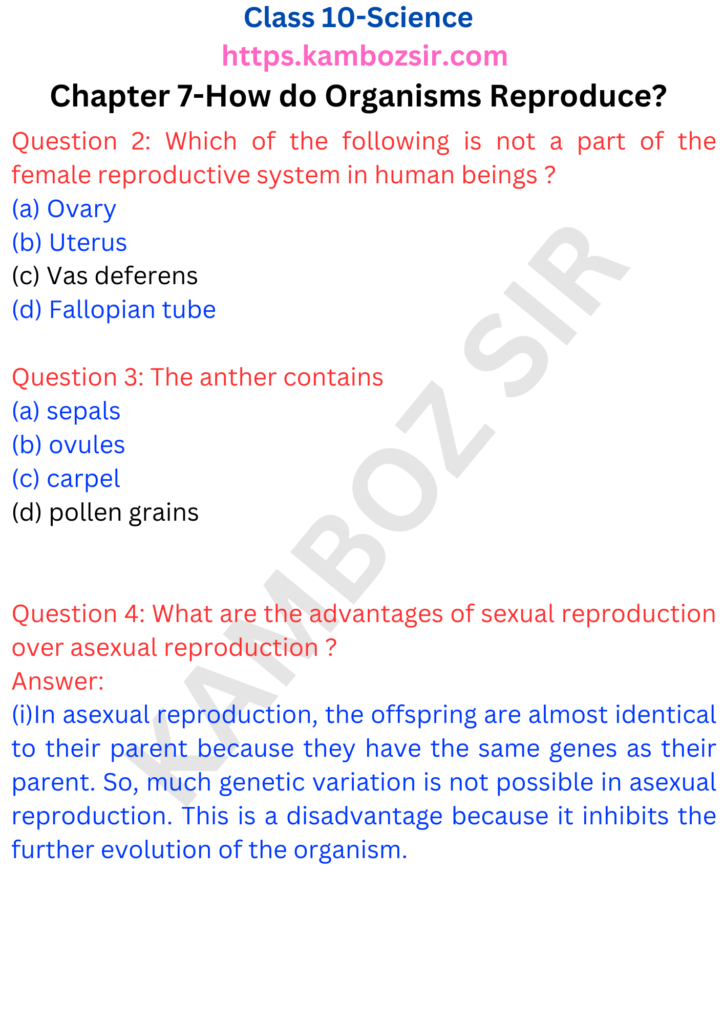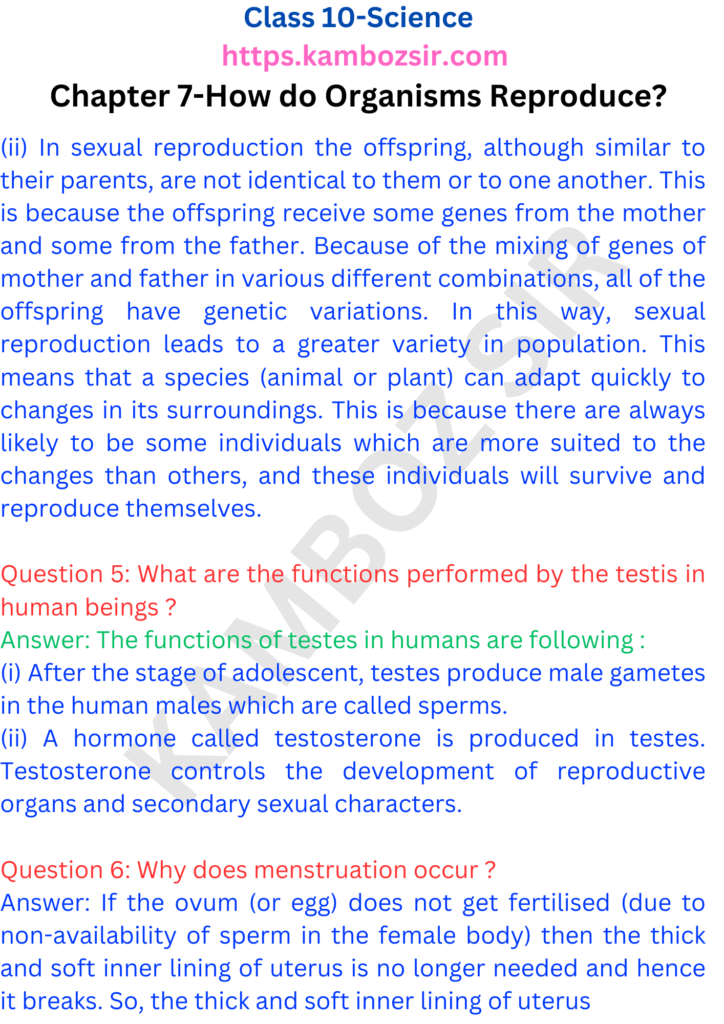Class 10 Chapter 7-How do Organisms Reproduce Solution
Class 10 Chapter 7-How do Organisms Reproduce Solution
Reproduction is the biological process by which new individuals of the same species are produced, ensuring the continuation of life. Reproduction is essential for the survival of a species and ensures genetic diversity. In this article, we will explore the different types of reproduction and their significance.
Organisms can reproduce asexually or sexually. Asexual reproduction involves the production of offspring without the involvement of gametes (sex cells). In asexual reproduction, the offspring are genetically identical to the parent. This type of reproduction occurs in many organisms, including bacteria, plants, and some animals, such as sea anemones and hydra. Asexual reproduction is advantageous because it allows for rapid reproduction and colonization of new habitats.










